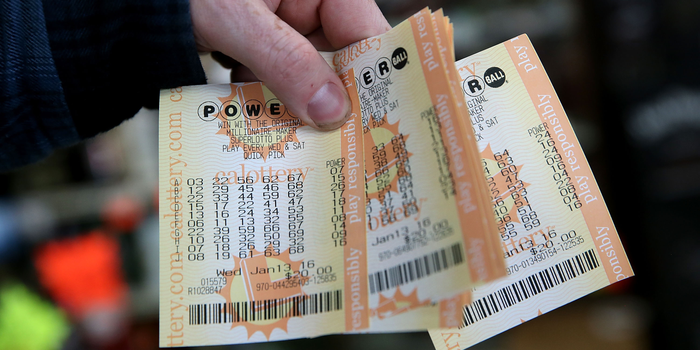Let’s be honest. Who hasn’t dreamed of that life-altering jackpot win? The sudden rush, the financial freedom, the sheer impossibility of it all. It’s a powerful daydream. But behind the flashing lights and giant check presentations lies a cold, unblinking reality: mathematics.
Understanding the probability analysis for different jackpot games isn’t about crushing dreams. Honestly, it’s the opposite. It’s about pulling back the curtain. It’s about making informed choices with your entertainment budget. So, let’s dive into the numbers that shape your odds.
The Granddaddy of Them All: The Classic Lottery Draw
This is the format most people know. Pick a set of numbers from a larger pool. The big multi-state lotteries like Powerball and Mega Millions are the titans here. Their probabilities are, frankly, astronomical. But why?
It all comes down to combinations. The formula for calculating your chances is a classic combinatorial function. For a game where you choose r numbers from a set of n, the number of possible combinations is:
C(n, r) = n! / (r! * (n – r)!)
Let’s break that down with a simplified example. Imagine a lottery where you pick 6 numbers from 1 to 49.
- The number of possible combinations is C(49, 6).
- That works out to 13,983,816.
- So, your chance of hitting the jackpot is precisely 1 in 13,983,816.
Now, for Powerball, it’s more complex. You choose 5 from 69, and then one separate Powerball from 26. This multiplies the odds dramatically.
C(69, 5) * C(26, 1) = 292,201,338
Your odds of winning the Powerball jackpot are about 1 in 292 million. To put that in perspective… you’re statistically more likely to be struck by lightning. Twice. Or to become President of the United States. It’s a number so large it becomes almost abstract.
Scratch-Offs and Instant Win Games
These are a different beast altogether. The probability isn’t based on a public draw but is pre-determined and printed on a fixed number of tickets. The odds are usually much better than a mega-draw lottery, but the top prizes are far fewer.
Here’s the deal with scratch-off probability analysis. The issuer prints, say, 10 million tickets for a specific game. They decide in advance how many of those tickets will be winners of each prize tier.
| Prize Tier | Number of Tickets | Odds of Winning |
| $1,000,000 Jackpot | 4 | 1 in 2,500,000 |
| $10,000 | 100 | 1 in 100,000 |
| $100 | 50,000 | 1 in 200 |
| $1 | 1,000,000 | 1 in 10 |
| Loser | 8,949,896 | About 9 in 10 |
See that? The overall odds of winning any prize might be 1 in 4, which sounds great. But the odds of a life-changing sum are still incredibly slim, and most wins are minimal. The key takeaway? Always check the odds printed on the ticket or the lottery’s website. They vary wildly from game to game.
Slot Machine Jackpots: The RNG Reigns
Ah, the hypnotic spin of the reels. Slot machine probability is arguably the most opaque for the player. It’s all governed by a Random Number Generator (RNG)—a computer program that churns out thousands of number combinations per second, even when no one is playing.
When you hit the spin button, the RNG stops on a combination that corresponds to a set of symbols on the virtual reels. The probability of hitting a jackpot is determined by how the game’s designer, or the casino, “weights” the virtual reels.
Two Main Types of Slot Jackpots:
- Fixed Jackpots: These have a set, unchanging top prize. The odds are fixed, just like a scratch-off. The probability is calculated based on the number of virtual stops and the specific jackpot symbol combination required.
- Progressive Jackpots: This is where it gets interesting. A small percentage of every bet feeds a growing, networked jackpot. The odds of winning a massive progressive are often the longest of all. We’re talking 1 in 50 million, or even higher. The trade-off is clear: minuscule chance, colossal prize.
You can’t calculate these odds yourself. They are buried deep within the game’s programming. Your best bet, if you’re curious, is to look for the game’s “RTP” or Return to Player percentage. A 96% RTP means the machine is programmed to pay back 96% of all wagered money over an immense number of spins. It tells you nothing about your specific session, but it gives a vague sense of the game’s overall “tightness.”
So, What Does This All Mean for You?
Okay. We’ve crunched the numbers. We’ve stared into the abyss of combinatorial mathematics. Here’s the practical, human takeaway.
Viewing these games through the lens of probability analysis fundamentally shifts your perspective. It transforms them from a potential investment—which they are decidedly not—into a form of paid entertainment. You’re buying a ticket to a daydream, a few minutes of thrilling “what if.”
The house, or the lottery commission, always has an edge. That’s how they exist. The key is to see that edge for what it is: the cost of your entertainment.
Think of it like buying a movie ticket. You pay for two hours of entertainment. With a lottery ticket or a session at the slots, you’re paying for the emotional experience of anticipation and chance. The probability of a major win is the background radiation of that experience—always there, but not something to plan a life around.
In the end, the math offers a strange kind of comfort. It grounds the frenzy in reality. It allows you to enjoy the game for what it is, to spend only what you’re comfortable losing, and to truly celebrate the rare, universe-defying win for the beautiful statistical anomaly it is. Because when you understand the odds, any win, big or small, feels a little bit more like magic.





